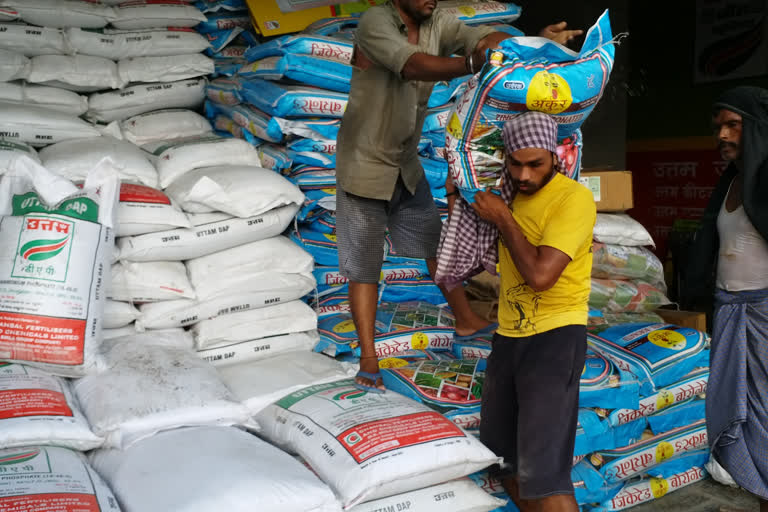Kota (Rajasthan): Di-ammonium phosphate (DAP) is imported in large numbers from China. Only about 20 per cent of this fertilizer is produced in India. For the remaining 80 per cent, India is dependent on other countries. Due to the high cost, Indian companies have limited the import of DAP, resulting in a huge shortage of DAP in the market.
The deteriorating relations between India and China are also responsible for these conditions. Import duty on DAP coming from China has been increased. In that backdrop, imports have been badly affected. India's dependence has now become more on European countries. Where the cost of DAP coming from is high. It is clear that companies are not trying to call for DAP after incurring losses. This is directly affecting the farmers.
Farmers are searching the shops for DAP fertilizer as it is used at the time of sowing. For being expensive, companies are not able to buy it. Up to 40 per cent of DAP in India has been coming from China. But, the increasing strategic sourness with China has also affected trade relations. Trade between the two countries has been almost closed for almost one-and-a-half years and duty has been increased on imports from China.
Also read: Farmers use drone to spray fertiliser
Now India is importing raw materials from European countries. The DAP is being manufactured in some factories in India itself. But, the raw material prices are very high. The Government of India is also unable to increase the subsidy on the import of DAP. Therefore, the companies incurring losses have reduced the import of DAP by 75 per cent.
Also read: IFFCO aims at production of Nano urea liquid fertilizer for crop productivity
Last year, there was a demand of 1.5 lakh metric tonnes of DAP in the Hadoti region of Rajasthan. Such quantity of DAP had reached here through fertilizer companies. In such a scenario, this year also there is likely to be the same demand. Presently, 57,000 metric tonnes of urea, DAP 13,400 metric tonnes, SSP 42,000 metric tonnes are available, obviously, there may be a shortage of DAP.
The farmers, who are searching for DAP, say that they come to Kota city every day from rural areas to buy DAP, but in vain. Fertilizer shopkeepers also give assurance but are not able to provide. Some farmers also say that they are not getting as much fertilizer as they demand.
Also read: Spraying of nano-urea by drones will improve productivity, cut subsidy bill
Farmers get subsidies
Farmers get subsidies on the purchase of urea, DAP and SSP from the Central government, the shopkeeper gets it through the company. Against this backdrop, the government is providing this fertilizer at half the cost. The government has fixed the price of urea at Rs 267, DAP at Rs 1,200 and SSP at Rs 275. The Central government also gives the same amount to the companies as a subsidy.
Farmers advised to go for SSP
Ramavtar Sharma, Joint Director, Agriculture Department, said that this time, too, there may be a shortage of Di-ammonium Phosphate. He advised farmers to buy single super phosphate. A seminar is also being organised in this connection so that the farmer can sow the crop with SSP. SSP was being manufactured in India and there is no shortage of it. The department is urging the farmers to sow by adding three bags of SSP, which becomes equal to one bag of DAP. It is also high in calcium and sulfur.
Also read: Fertilizer price hike is anti-farmer, says Congress



